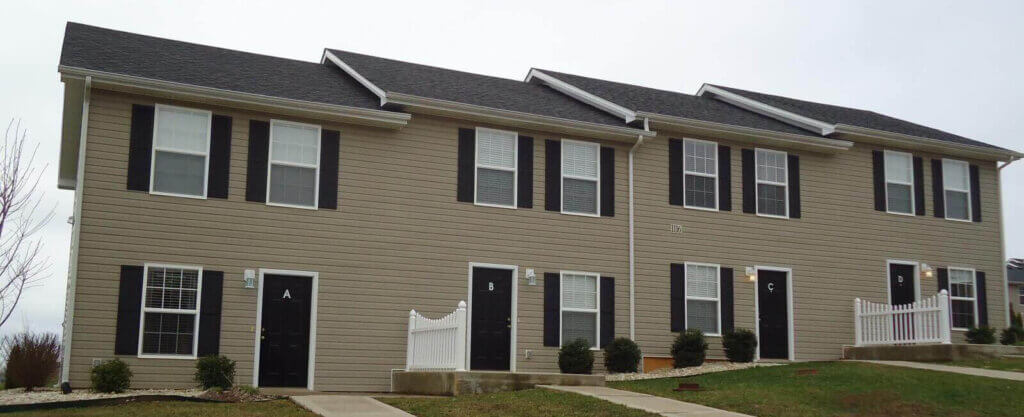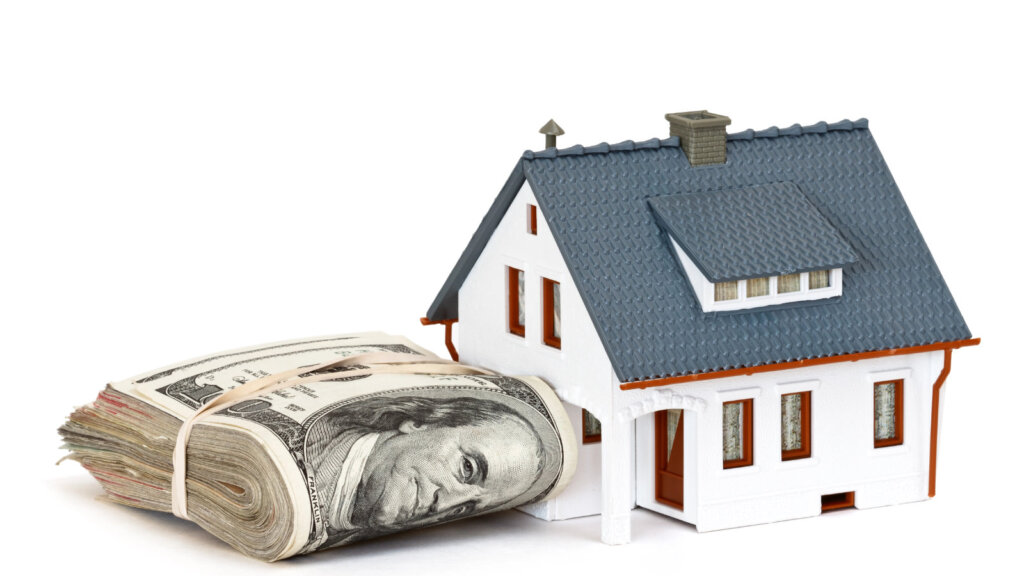Why “Fast for Cash” Matters in 2025
Life happens—job transfers, looming foreclosure, inherited properties, or a rental you’re finally done managing. The longer your home sits, the more you bleed in mortgage payments, taxes, and stress. According to HomeLight, the average U.S. home spends 58 days on market, but a well-executed quick-sale strategy can cut that to 7–14 days. This guide breaks down exactly how to sell my house fast for cash—or at least faster than the open-market average—without sacrificing peace of mind or every last dollar.

Strategy #1: Accept a Competitive Cash Offer
Cash buyers—sometimes called iBuyers, institutional investors, or local house-buying companies—skip the mortgage middleman. That means:
- No bank appraisals or lender inspections
- Few if any contingencies
- Closing in as little as seven days
How Cash Buyers Work & What They Pay For
- As-Is Purchases: Most cash buyers don’t require repairs.
- Speed Discount: Expect offers to land 5–15 % below what a financed buyer might pay, reflecting time and repair risk.
- Proof of Funds: Reputable buyers provide bank statements or hard-money letters up front.
7-Day Close Timeline vs. Traditional Escrow
| Step | Cash Sale | Financed Sale |
|---|---|---|
| Offer Accepted | Day 0 | Day 0 |
| Title & Docs | Day 1–3 | Day 1–10 |
| Inspections (opt.) | Day 3–4 | Day 10–25 |
| Sign Closing Docs | Day 5–6 | Day 30–45 |
| Funds Disbursed | Day 7 | Day 45+ |
Find Your Optimal House Selling Strategy
Answer a few questions to get a personalized recommendation
Strategy #2: Turbo-Charge Curb Appeal & Staging
First impressions happen in seconds. A National Association of Realtors survey found that 99 % of buyers search online first, and listings with polished photos generate 3× more showings.
The 48-Hour Refresh Checklist
- Day 1 Morning: Power-wash siding and walkways
- Day 1 Afternoon: Mow, edge, and mulch front beds
- Day 1 Evening: Swap in a fresh steel mailbox and modern house numbers
- Day 2 Morning: Apply neutral fresh paint to the front door
- Day 2 Afternoon: Declutter, depersonalize, and add crisp white linens
- Day 2 Evening: Hire a professional photographer—money well-spent
Small-ticket upgrades (under $1,500 total) can add up to 5 % in perceived value and shorten time on the market by a week or more.
Strategy #3: Price It to Move—Not to Linger
Overpriced homes become “stale listings,” forcing painful price cuts later. Use the Goldilocks Formula: list at 98–100 % of median comparable homes (“comps”) within a half-mile radius and the last 90 days.
The Goldilocks Formula Using Comparable Homes
- Pull three nearby, similar-condition comps.
- Throw out the high and low outliers.
- Average the remaining price per square foot.
- Multiply by your property’s square footage.
Result: You’re positioned to attract buyers who perceive value and are ready to write offers in week one.
Strategy #4: Sell the House As-Is—Pros, Cons & Legal Must-Knows
Sometimes repairs aren’t worth your time or money. Selling as-is means the buyer accepts the property in its current condition, but you still must disclose known defects (think mold, termites, foundation cracks).
Pros
- Zero renovation costs
- Faster time to market
- Appeals to investors and flippers
Cons
- Lower purchase price (up to 20 % discount)
- Fewer traditional buyers
- Potentially higher scrutiny on disclosures
Tip: Pair an as-is listing with a cash offer option to widen your buyer pool and keep negotiations swift.
Strategy #5: For-Sale-By-Owner (FSBO) Shortcuts
Going FSBO can save the 3 % listing-agent commission, but be prepared to:
- Market relentlessly: Yard sign + MLS flat-fee listing + social ads
- Vet buyers: Request pre-approval letters or proof of funds
- Negotiate like a pro: Expect seasoned investors to test your price
- Manage paperwork: Disclosures, purchase contract, escrow selection, closing costs breakdown
A helpful reality check: Only 10–12 % of U.S. homes sell FSBO, and many eventually hire an agent. Decide if the trade-off in time and complexity is worth the savings.
Strategy #6: Leverage an Experienced Real Estate Agent
Top agents bring more than a lockbox. HomeLight data shows the best 5 % of agents:
- Sell homes 10 % higher on average
- Close 13 days faster than the market median
What to look for:
- Recent track record in your ZIP code
- Digital marketing plan (pro photos, video, 3-D tours)
- Negotiation credentials (ask about list-to-sale-price ratios)
- Experience with cash buyers to maximize options
Yes, you’ll pay a commission, but strong agents often net you more even after fees.
Strategy #7: Avoid These Five Deal-Killing Mistakes
- Overpricing out of the gate
- DIY listing photos in poor lighting
- Ignoring minor repairs that scare buyers
- Restricting showings to banker’s hours
- Hiding liens or title issues until closing
Fix these, and you’re already ahead of most “for sale” signs on the block.
Quick-Sale Methods Compared: Speed, Cost & Net Proceeds
| Method | Typical Days to Close | Seller Costs | Net Proceeds* | Best For |
|---|---|---|---|---|
| Cash Buyer | 7–14 | $0 repairs, ~1 % title/escrow | 85–90 % of market value | Urgent timelines |
| Agent Listing | 45–90 | 6 % commission + repairs | 92–96 % | Sellers seeking top dollar |
| FSBO | 45–120 | MLS flat fee + buyer-agent 3 % | 90–94 % | DIY sellers comfortable negotiating |
| Auction / Short Sale | 30–60 | Auction fee or lender discount | 70–80 % | Distressed or underwater mortgages |
*Net proceeds are illustrative; local markets vary.
Legal Considerations
Buyers should thoroughly investigate the property before finalizing the deal, including assessing its physical condition, verifying legal ownership and title status, reviewing zoning regulations, and examining financial aspects like taxes, liens, and encumbrances.
Sellers must inform potential buyers about any known defects or issues related to the property, such as pest infestations or water infiltration. Failure to disclose significant issues can lead to legal consequences.
Buyers should check the title of the property to determine the legal owner and trace the list of previous owners. This helps confirm that the seller is the rightful owner and avoids disputes.
A document preceding the sale deed, outlining the terms of the sale, including price, payment details, and possession date. It splits the buyer's and seller's rights and responsibilities.
When a property is sold, registration duties transfer from the seller to the buyer. The buyer must register the property with local authorities and pay the required fees and stamp duty.
After completing the registration process and payment, the buyer can take possession of the property. The seller must transfer possession on or before the date listed in the sale agreement.
Essential Clauses and Conditions in Contracts:
The agreed amount the buyer will pay the seller.
A percentage of the sale price paid by the buyer when contracts are exchanged.
The date when the final payment is made, and property ownership is transferred.
Specifies items included or excluded from the sale.
Completed by the seller, providing details about the property, such as boundaries, disputes, and any building works.
The document that formally transfers ownership from the seller to the buyer.
This tax applies to the profit made from selling a property. A capital gain arises when you make a profit from a property sale. This gain is taxed at an income tax rate and social contributions.
Exemptions:
The sale of a home must be reported to the IRS if a Form 1099-S was received or if there is a non-excludable gain.
Real property taxes should be divided between the seller and purchaser. The seller is responsible for the portion before closing, and the purchaser for the period after closing.
The purchaser is typically responsible for transfer taxes applicable to the conveyance and transfer of the purchased assets.
Certifications and affidavits may be required by the Foreign Investors Real Property Tax Act (FIRPTA).
Real estate and personal property taxes should be prorated based on the number of days the property was owned by the seller and purchaser during the tax period.
Buyers and sellers should agree on how closing costs will be divided, including escrow fees, title insurance premiums, and recording costs.
Utility charges should be prorated as of the closing date, with the buyer responsible for establishing new accounts and transferring utilities to their name.
Buyers can include a condition in the contract that the offer is valid only if a professional survey reveals no major problems, such as boundary issues or easements.
This part was created based on the following resources:
- https://www.bingamanhess.com/blog/legal-considerations-in-real-estate-transactions
- https://www.lodhagroup.com/blogs/homebuyers-handbook/legal-must-haves-for-buying-or-selling-property
- https://www.investopedia.com/financial-edge/0810/7-must-have-real-estate-contract-conditions.aspx
- https://www.lil-legal.co.uk/post/9-legal-considerations-for-buying-or-selling-property-in-the-uk
- https://www.consultants-immobilier.com/en/sellers-guides/the-stages-of-the-sale/capital-gains-tax-on-real-estate-what-you-need-to-know/
- https://www.irs.gov/newsroom/tax-considerations-when-selling-a-home
- https://www.investopedia.com/ask/answers/06/capitalgainhomesale.asp
- https://www.sec.gov/Archives/edgar/data/1683553/000095017025053945/sprb-20241231.htm
Final Checklist & Next Steps
- Choose your priority: speed or maximum price
- Pull recent comps and set a realistic list price
- Decide between cash, agent, or FSBO route
- Prep the property: repair essentials, declutter, boost curb appeal
- Gather disclosures, mortgage payoff, and clear title docs
- Schedule flexible showings (nights & weekends)
- Be ready to evaluate offers quickly—time kills deals
The "best" strategy to sell your house fast depends on your specific situation and priorities. If maximum speed is your primary goal, Strategy #1, accepting a competitive all cash offer from a house-buying company or investor, is often the quicker process. These buyers frequently buy houses "as-is," which can eliminate delays typically associated with making repairs. This approach can lead to closing in as little as 7-14 days.
However, for a balance of speed and potentially getting more money, you might also consider turbo-charging your curb appeal (Strategy #2), pricing it to move (Strategy #3), or working with experienced agents (Strategy #6) who can often sell homes faster than the market average through effective marketing and access to a network of potential buyers.
A well-executed quick-sale strategy, particularly when you sell directly via an all cash offer (Strategy #1), can significantly shorten the home selling process. The timeline comparison indicates that a cash sale can see funds disbursed in as little as seven days after the offer is accepted.
This makes it a much quicker process compared to the traditional way of selling with a financed buyer, which typically takes 45 days or more to close.
Selling your home for cash can be an excellent idea if your main objective is a speedy and more certain home sale, especially when dealing with situations like job transfers, looming foreclosure, or managing inherited properties.
Primary benefits include:
- Very fast closing timeline (often 7–14 days)
- Bypassing bank appraisals and lender inspections
- Usually avoiding the need for major repairs, as most cash buyers purchase properties "as-is"
Main trade-off: Cash offers typically land 5–15% below what a financed buyer might pay, meaning you might not get as much money for your property. It's a choice between the speed and convenience of a cash home sale versus potentially a higher sale price through the traditional way.
While an all-cash offer provides speed, if your primary goal is to get as much money as possible for your home sale, Strategy #6 (Leverage an Experienced Real Estate Agent) is often more advantageous. Top agents can sell homes for 10% higher on average. Even after accounting for commissions, experienced agents can often net you more money.
This approach focuses on attracting a wide pool of interested buyers using professional marketing materials, including those who require financing, rather than primarily targeting house flippers or investors who typically expect a discount. Enhancing curb appeal (Strategy #2) and pricing effectively (Strategy #3) also contribute significantly to maximizing your proceeds.
If your house is a fixer-upper or requires major repairs that you don't have the time or resources to address, you can still sell fast. Strategy #4 (Sell the House As-Is) is specifically designed for this situation.
Selling "as-is" means that potential buyers agree to accept the property in its current condition, without expecting you to undertake making repairs. This approach is particularly appealing to cash buyers, including investors and house flippers, who are accustomed to purchasing properties that need work.
Pairing an "as-is" listing with an all cash offer option can widen your buyer pool and ensure a quicker process, as these home buyers are prepared for the property's condition and aim for a swift home sale.
The primary differences in the home selling process between a cash sale and the traditional way revolve around speed, financing complexities, and contingencies:
Cash Sale Benefits:
- Can close very rapidly—sometimes in as little as 7-14 days
- Bypasses the often lengthy mortgage approval process
- No bank appraisals or lender inspections required
- Few, if any, contingencies
- Greater certainty of closing
Traditional Sale Benefits:
- Usually results in a higher sale price by attracting a broader range of interested buyers
- Access to more potential buyers through financing options
Trade-off: Traditional sales usually involve a longer escrow period (30-45+ days) but often at a higher price, while cash sales offer speed and certainty but often at a discounted price.


